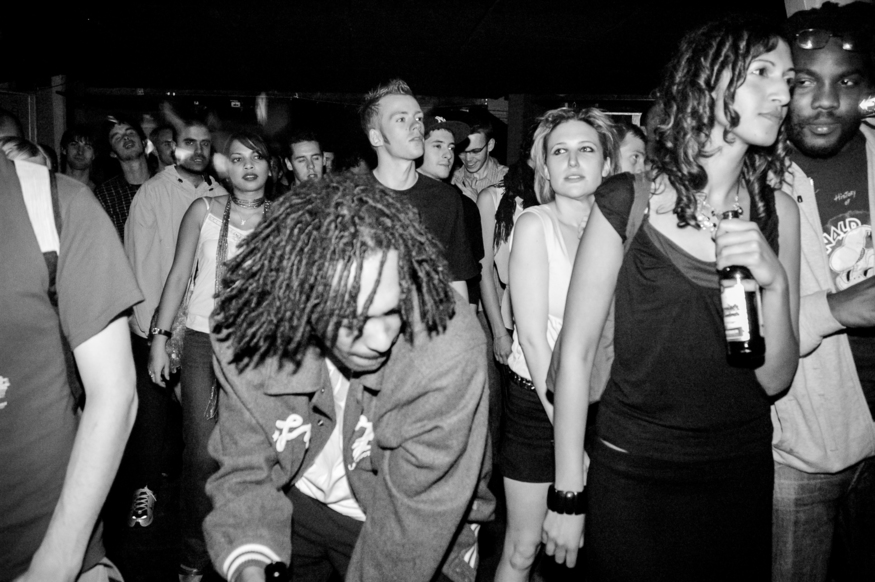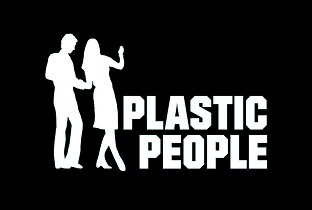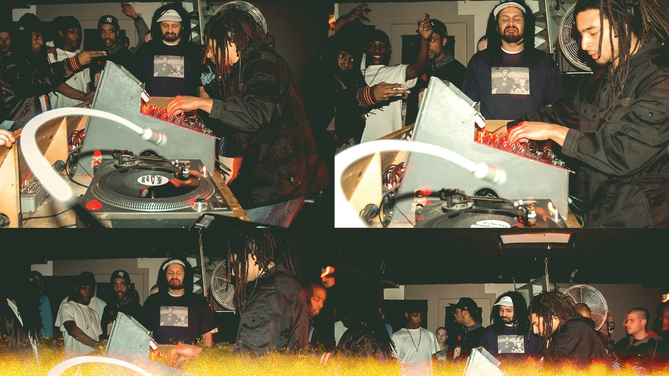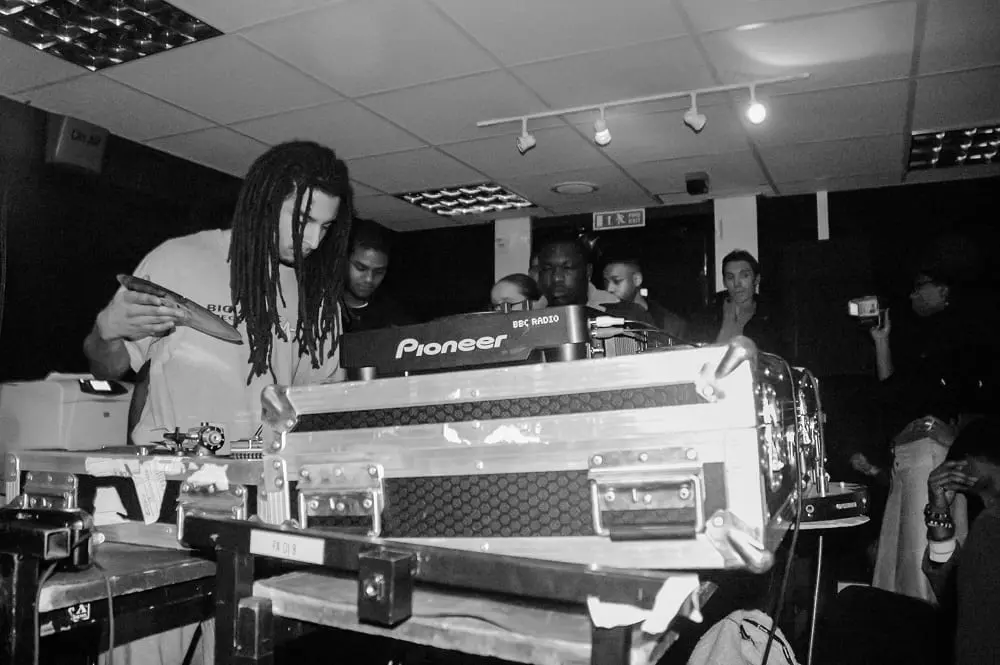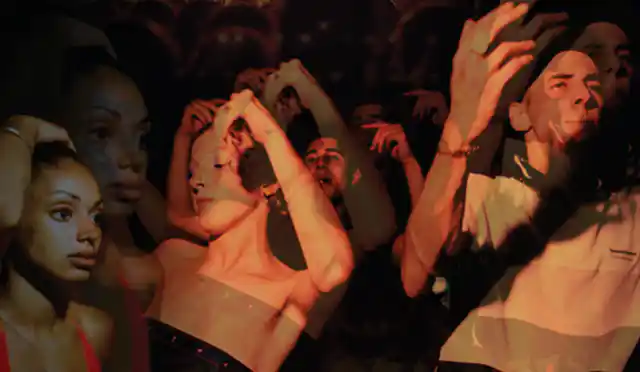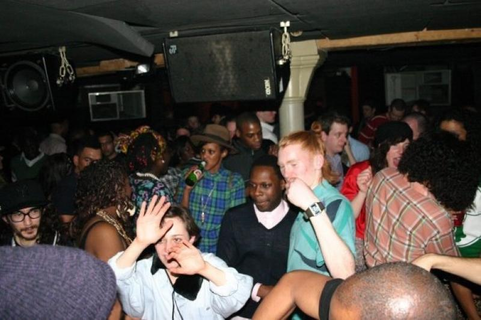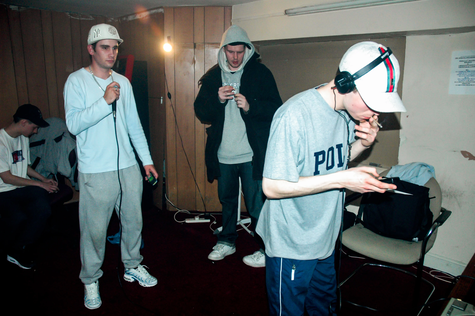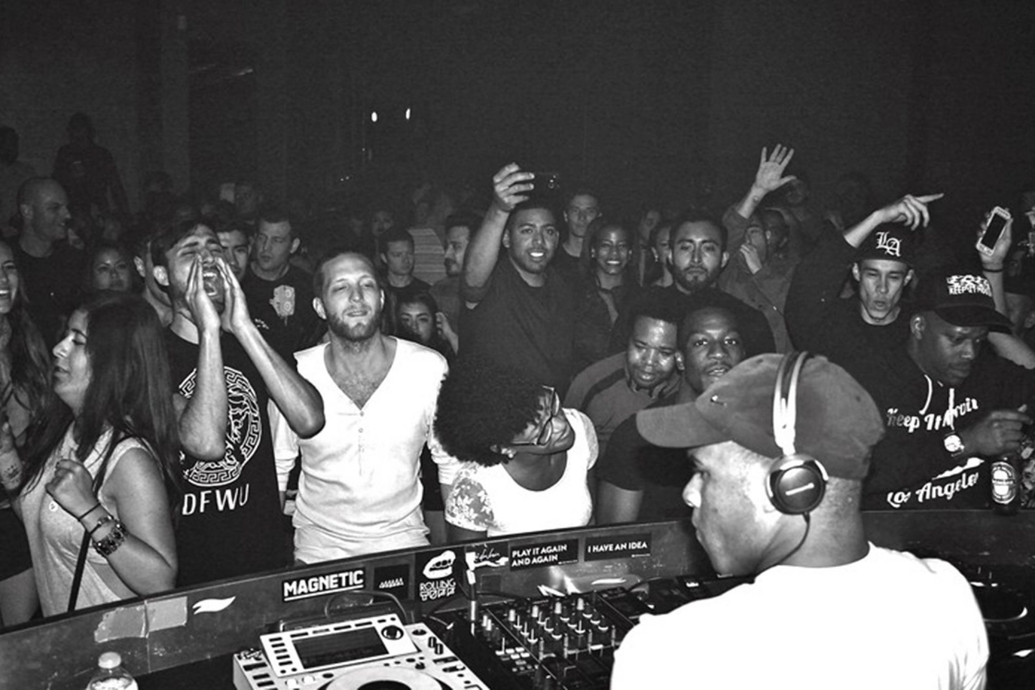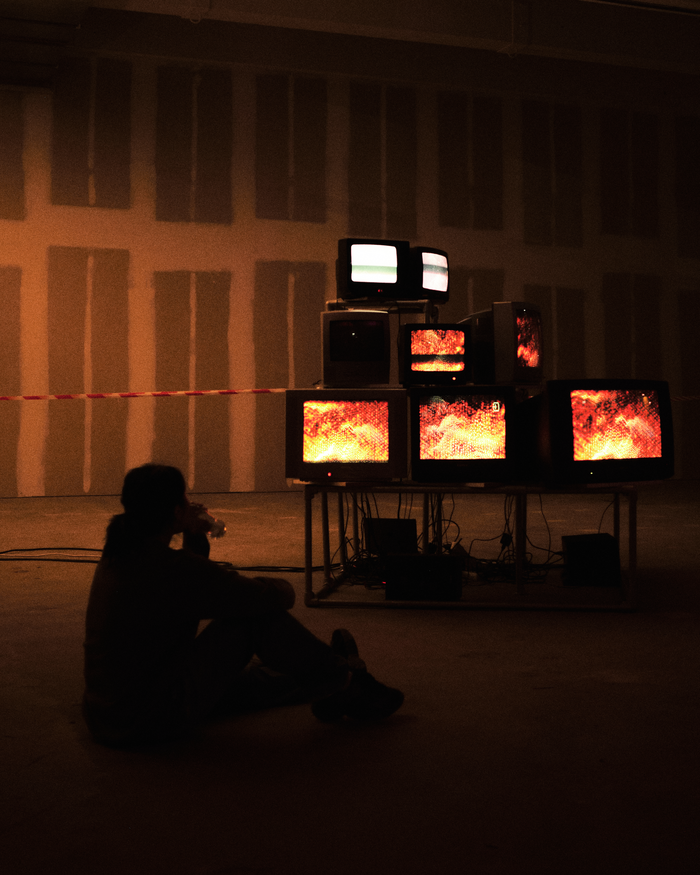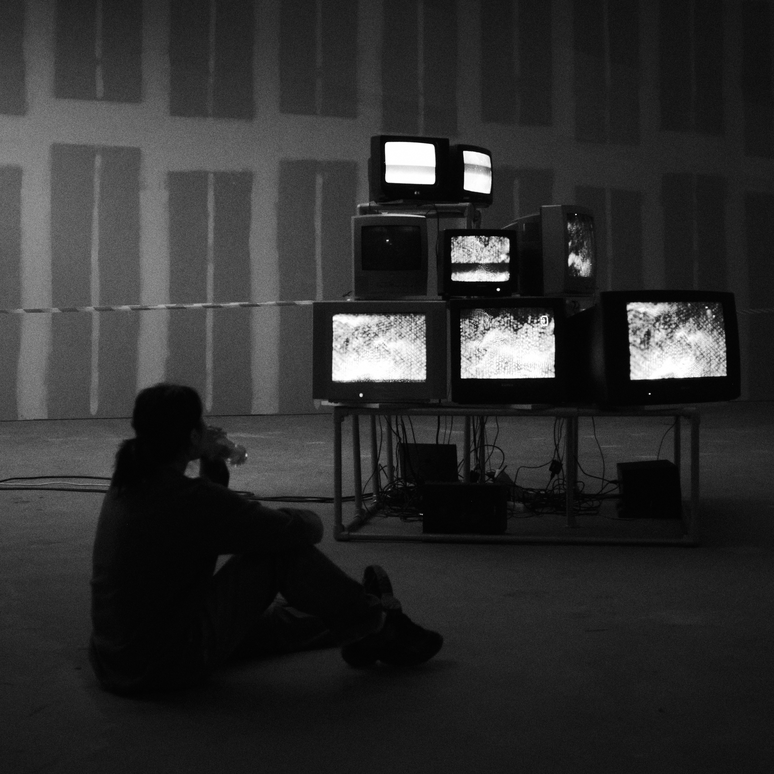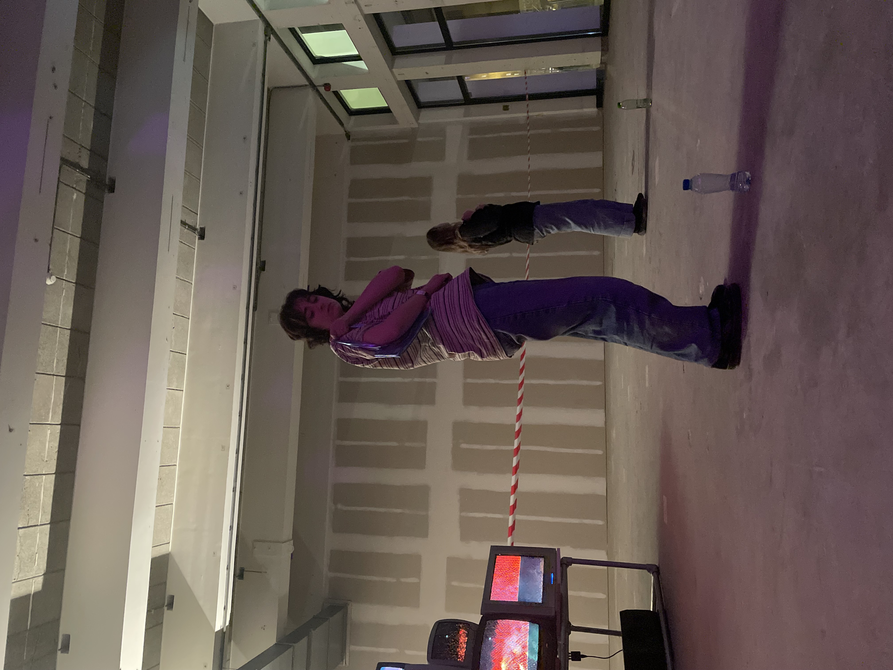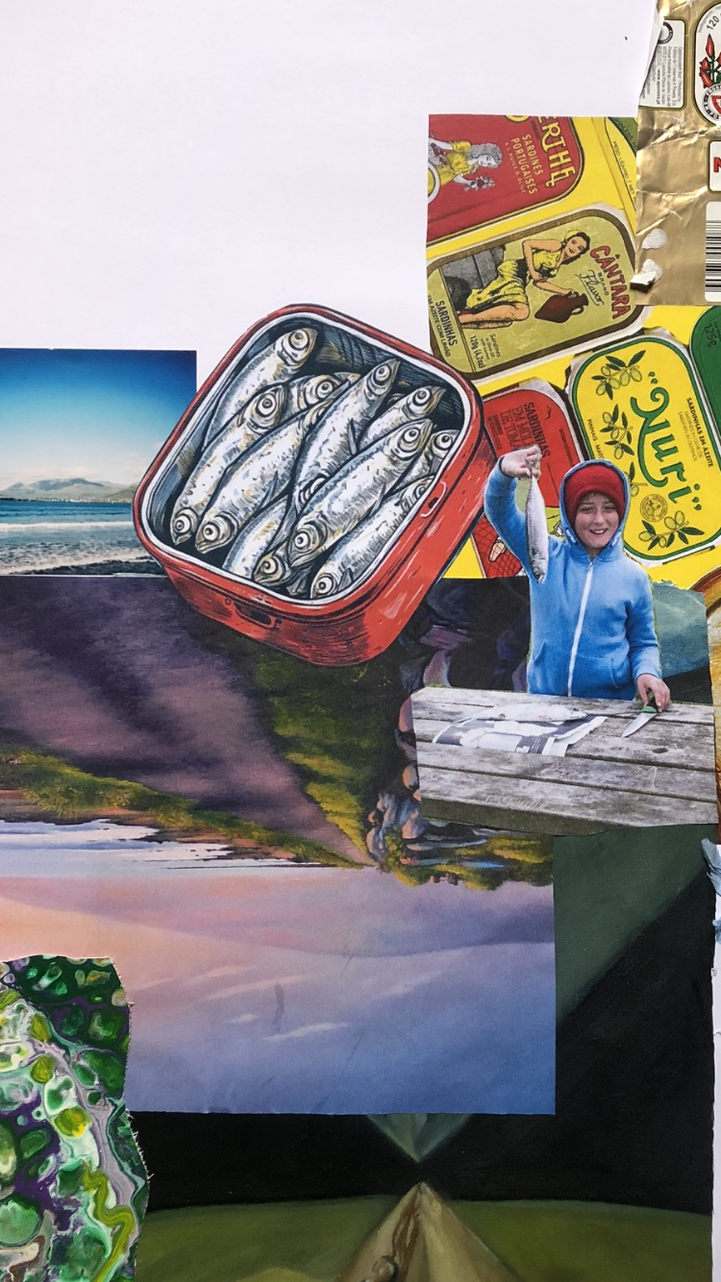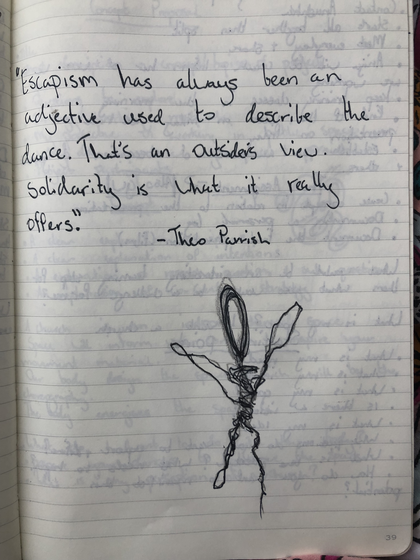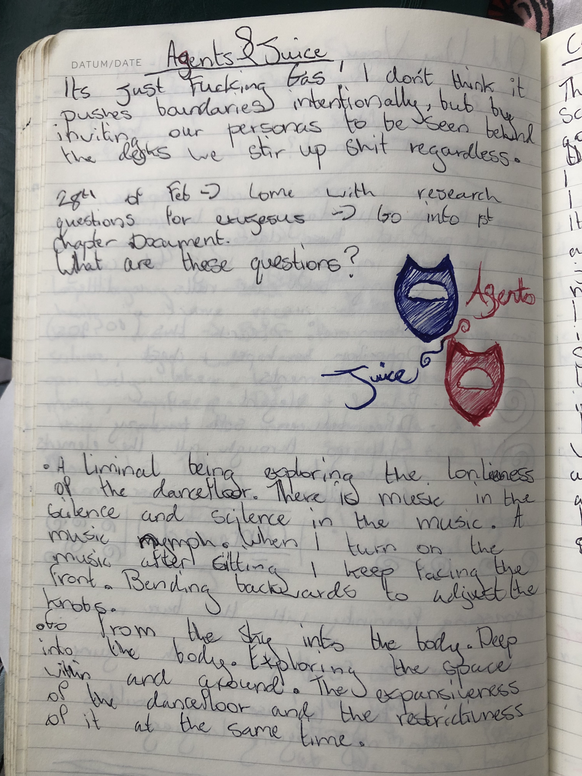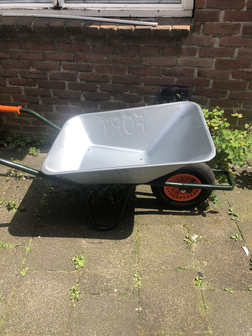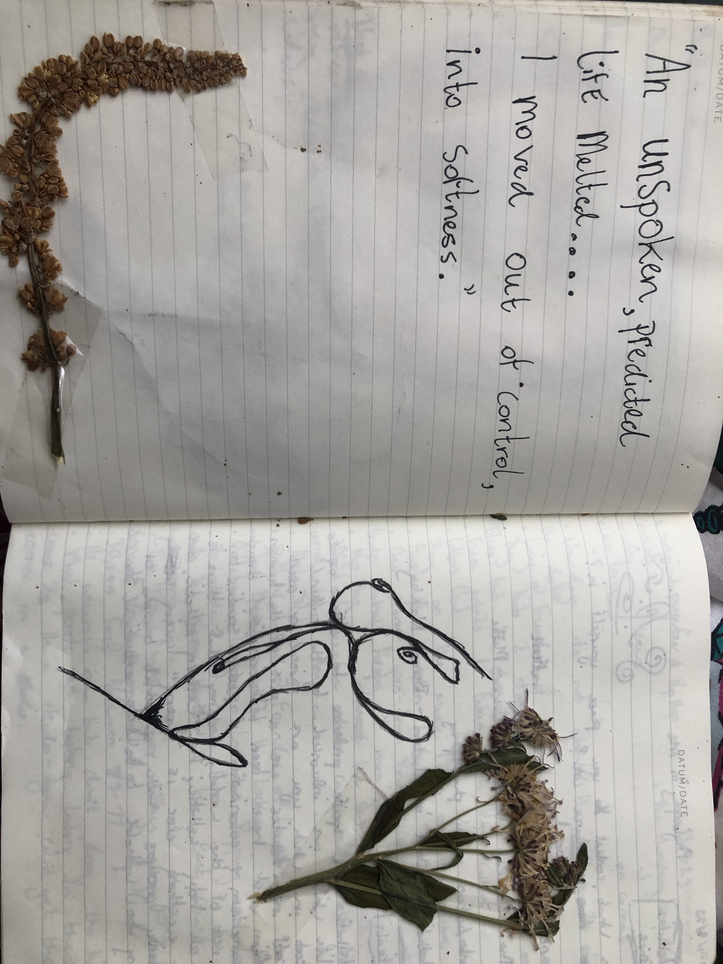Just before I read this book, I found myself spiralling further and further into the realms of underground club music and this led me to start mixing music. I had no aspirations of becoming a DJ, it was just another form of creative expression for me. I was already producing music for my dance performances, so this felt like another stop on my creative journey.
However somehow, I did end up as a DJ and I started gigging in clubs in Tilburg. This was so fruitful, and it opened my eyes to the other aspects of the dancefloor. To all the things that you might miss when on a night out. I thought that this would be an interesting topic and perspective to take for my graduation research.
Last summer, this was the book that started it all. I would say that this is a core piece if not the core of my whole research for my graduation performance. Emma Warren is an amazing writer. She takes your through a journey of the Irish and uk dancefloors. From our days as dancing toddlers to being in your forties and joining contact improvisation classes. For just being a person who loves music to becoming a radio presenter. It is truly an inspiring piece of writing and I think it highlights just how important spaces of dance are. Whether it is a club or a studio or your bedroom. And it also delves into the movement and music connection. Displaying how you really can’t have one without the other.
This clip is from 2007 from a bassline party in the UK. Not a phone in sight, everyone dancing without a care in the world. And not just bopping from side to side with a drink in hand and a smoke in the other, but dancing. The chaos in this clip is unmatched to anything I have seen before. There are a lot of boundaries broken as well. At the beginning you can see the DJ rewind the track and someone from the crowd reaches over the booth to press play on the track again. What a moment. Just bonkers. And this brings me to the boundaries that I’m breaking or playing with. The boundary of the dancer and the DJ. And how does a dancer who is a DJ see the space? What are the things that they see that may be hidden to the naked eye? These are the questions that are bubbling up.
What I am noticing in this process is a longing for freedom and a chasing of euphoria, and these are two core elements of what is I guess advertised of club culture and nightlife. But as someone who has a female body these elements aren’t easily obtainable, and I feel like I am in a constant search for it on the floor. And this brings be back to Emma’s book because I find myself living vi-curiously through her tales and experiences. Her writing is the epidemy of a euphoric haze.
So, there is now a disappointment when I go out because it will never feel like her writing, and it’s a sad thought but I think nightlife will never be the same as it was back then. As humans I don’t think we connect in the same ways anymore. People are constantly on their phones, ritualistically facing the DJ and not facing each other, trying to capture a ‘viral’ moment to post on social media. As I mentioned in my artistic vision, connection is a vital part of my creative being and in most of my works I find that there is some sort of reference to human connection even if it is a solo.
To wrap this section up, I would say that this research is strongly rooted in the perception of time. Maybe not in a sense of a fast-moving performance or a slow-moving performance but, to jumping back and forth and round to moments when I felt free on the dancefloor or to a period that I might not have experienced but am inspired by (like in Emma’s book). Again, I want people to see my perspective. Maybe it won’t look like a club to them? Maybe that’s what I want?
“Loud Music in Dark Rooms” is a performance I created in 2023 during a process working with sara victoraviz. It was a project to focus and define our research methodology and to create whatever we wanted. Since my research is surrounding club culture, I went down that route. In my normal life I was being confronted by the realities of being a woman within club culture. The harassment I was experiencing was horrible and it inspired me to create from the female body’s perspective within nightlife.
To continue, I was also in a deep dive into dubstep sound system culture through the writings of Emma Warren, who describes beautifully how it felt to be a woman in the Dubstep environment. Just being a body in a space that allowed her to feel fully free. So, this music genre and culture became a catalyst for the movement material of the Performance. The basslines and the darkness of the music was comforting to move on. And thus, a music to movement methodology was birthed.
I wanted to explore the freedom that can be felt on the dancefloor as a female figure but also the hardship that we must endure. I represented the ‘hardships’ through a handbag, as every person who uses them would understand how annoying that are to dance with, (For me, it represents men not leaving me alone. And always being aware that you are in some way being watched.) And I also used a water bottle to play with the perception of time. And to continue with my ongoing theme of water within my works.
Originally, I created for the stage. However, in never felt quite right on it. So, when the opportunity came up to perform at the club event BREEK this piece came instantly to mind. This event wasn’t just a clubbing event. It gave a platform to artists who work with the theme of nightlife in their work.
I reworked the piece for the BREEK space and changed quite a lot of things. I was able to get two other dancers to join me as well and give it that collective female experience theme. I was also working around an artist’s installation which also added a different aspect to the overall performance.
It felt so right to move this performance out of the theatre context. It made it make sense. And it has made me want to continue working with this topic further and potentially bring it to a solo again but with me as the dancer. it also feeds into to my final graduation project, in terms of themes and scenarios.
